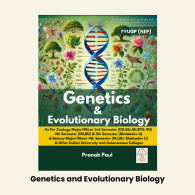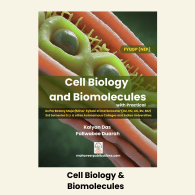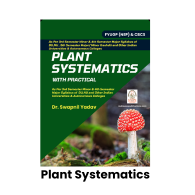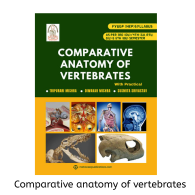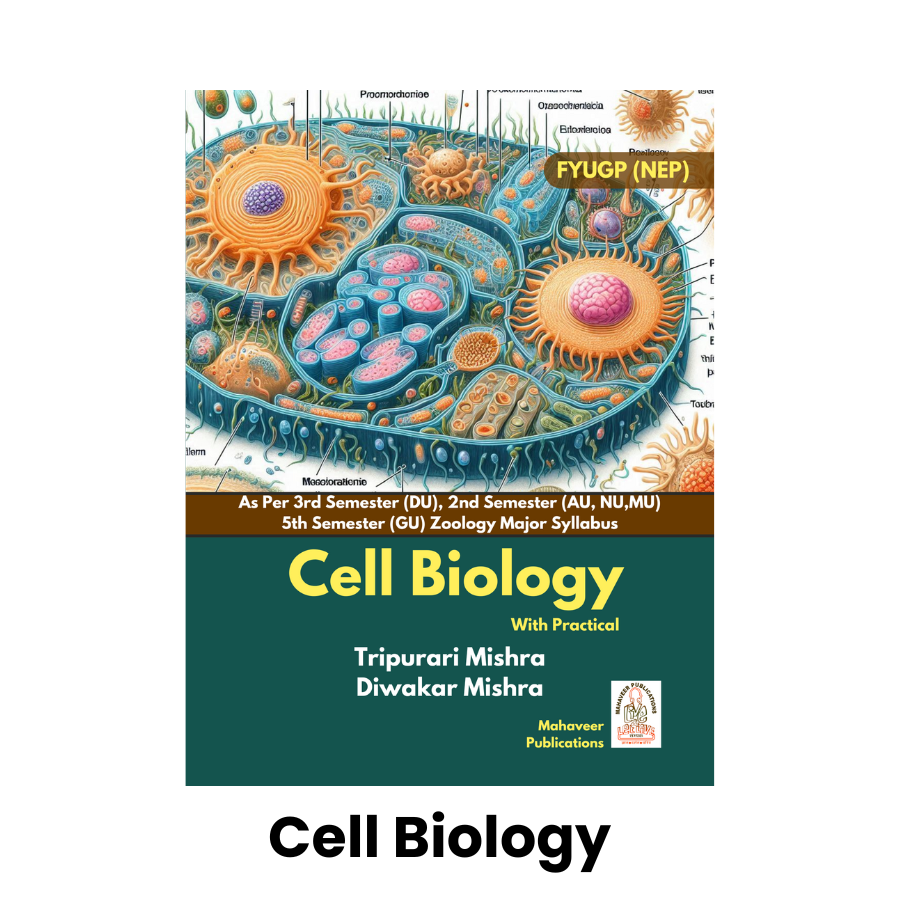

Cell Biology with Practical
Inhouse product
-
Rs212.50
Rs250.00 -
Rs254.15
Rs299.00 -
Rs288.00
Rs300.00 -
Rs276.25
Rs325.00 -
Rs175.50
Rs195.00 -
Rs238.00
Rs280.00
Reviews & Ratings
Cell Biology with Practical is a comprehensive textbook that provides an in-depth understanding of the structure, function, and dynamics of cells—an essential foundation for advanced studies in biological sciences. Authored by experienced educators Dr. Tripurari Mishra and Dr. Diwarkar Mishra, this book is tailored to meet the requirements of the FYUGP NEP syllabus for Zoology Major students.
It is designed to support:
-
3rd Semester students of Dibrugarh University (DU)
-
2nd Semester students of Assam University (AU), Nagaland University (NU), and Manipur University (MU)
-
5th Semester students of Gauhati University (GU)
-
Students from various autonomous colleges and other Indian universities following the NEP framework
Alongside detailed theoretical explanations, the book includes a well-integrated practical component, guiding students through fundamental lab techniques, microscope handling, slide preparation, and cellular observations. Richly illustrated with diagrams, experiments, and review questions, it equips learners for both academic success and laboratory competence.
This book is a vital resource for undergraduate students aiming to master the cellular basis of life as part of their zoological education.
Chapter 1: Introduction of Cell
Cell Theory and Basic Concepts
The cell is the fundamental unit of life, representing the smallest structural and functional unit of all living organisms. The cell theory, established by Schleiden, Schwann, and Virchow, states:
- All living things are composed of one or more cells
- The cell is the basic unit of life
- All cells arise from pre-existing cells
Types of Cells
Prokaryotic Cells
- Characteristics: Lack membrane-bound nucleus and organelles
- Examples: Bacteria (Eubacteria) and Archaea (Archaebacteria)
- Structure: Genetic material freely floating in cytoplasm
- Size: Typically 1-5 micrometers
Eukaryotic Cells
- Characteristics: Possess membrane-bound nucleus and organelles
- Examples: Plant cells, animal cells, fungal cells, protist cells
- Structure: Compartmentalized with distinct organelles
- Size: Typically 10-100 micrometers
Virus, Mycoplasma, Viroids, and Prions
Viruses
- Acellular infectious agents
- Contain genetic material (DNA or RNA) surrounded by protein coat
- Obligate intracellular parasites
- Cannot reproduce independently
Mycoplasma
- Smallest free-living organisms
- Lack cell wall
- Pleomorphic (variable shape)
- Cause diseases in plants and animals
Viroids
- Small, circular RNA molecules
- Lack protein coat
- Cause diseases in plants
- Replicate using host cell machinery
Prions
- Infectious protein particles
- Lack nucleic acids
- Cause neurodegenerative diseases
- Self-replicating through protein misfolding
Chapter 2: Plasma Membrane
Structure and Composition
The plasma membrane is a selectively permeable barrier that regulates cellular transport and maintains cell integrity.
Fluid Mosaic Model
- Phospholipid bilayer: Primary structural component
- Membrane proteins: Integral and peripheral proteins
- Cholesterol: Maintains membrane fluidity
- Carbohydrates: Form glycocalyx for cell recognition
Transport Mechanisms
Passive Transport
- Simple diffusion: Movement along concentration gradient
- Facilitated diffusion: Carrier-mediated transport
- Osmosis: Water movement across semipermeable membrane
Active Transport
- Primary active transport: Uses ATP directly
- Secondary active transport: Uses electrochemical gradients
- Bulk transport: Endocytosis and exocytosis
Membrane Functions
- Selective permeability: Controls molecular passage
- Cell recognition: Through surface glycoproteins
- Signal transduction: Receptor-mediated processes
- Maintenance of cell shape: Structural support
Chapter 3: Endoplasmic Reticulum
Types and Structure
Rough Endoplasmic Reticulum (RER)
- Appearance: Studded with ribosomes
- Function: Protein synthesis and modification
- Location: Adjacent to nucleus
- Products: Secretory proteins, membrane proteins
Smooth Endoplasmic Reticulum (SER)
- Appearance: Lacks ribosomes
- Functions:
- Lipid synthesis
- Steroid hormone production
- Detoxification
- Calcium storage
ER Functions
- Protein folding: Chaperone-assisted folding
- Quality control: Misfolded protein degradation
- Calcium homeostasis: Calcium storage and release
- Membrane synthesis: Phospholipid production
Chapter 4: Mitochondria
Structure
- Double membrane: Outer and inner mitochondrial membranes
- Cristae: Folded inner membrane increasing surface area
- Matrix: Inner compartment containing enzymes
- Intermembrane space: Between outer and inner membranes
Functions
Cellular Respiration
- Glycolysis: Cytoplasmic glucose breakdown
- Citric acid cycle: Matrix-localized oxidation
- Electron transport chain: Cristae-embedded complexes
- ATP synthesis: Chemiosmotic phosphorylation
Other Functions
- Calcium regulation: Calcium buffering
- Apoptosis: Programmed cell death initiation
- Thermogenesis: Heat production
- Metabolic regulation: Enzyme activity control
Endosymbiotic Theory
Mitochondria likely originated from ancient bacterial endosymbionts, evidenced by:
- Double membrane structure
- Own circular DNA
- Bacterial-like ribosomes
- Binary fission reproduction
Chapter 5: Cytoskeleton
Components
Microfilaments (Actin Filaments)
- Diameter: 7 nm
- Composition: Actin protein
- Functions: Cell shape, muscle contraction, cytokinesis
Intermediate Filaments
- Diameter: 10 nm
- Composition: Various proteins (keratin, vimentin)
- Functions: Structural support, nuclear organization
Microtubules
- Diameter: 25 nm
- Composition: Tubulin protein
- Functions: Organelle transport, cell division, cilia/flagella
Cytoskeletal Functions
- Structural support: Maintains cell shape
- Organelle positioning: Spatial organization
- Intracellular transport: Motor protein-mediated movement
- Cell motility: Enables cell movement
Chapter 6: Nucleus
Nuclear Structure
- Nuclear envelope: Double membrane with pores
- Nucleoplasm: Nuclear matrix
- Nucleolus: rRNA synthesis site
- Chromatin: DNA-protein complex
Nuclear Functions
- Genetic control: Gene expression regulation
- DNA replication: Chromosome duplication
- Transcription: RNA synthesis
- Ribosome assembly: rRNA processing and ribosomal subunit assembly
Chromatin Organization
- Euchromatin: Loosely packed, transcriptionally active
- Heterochromatin: Tightly packed, transcriptionally inactive
- Chromosome structure: Condensed chromatin during division
Chapter 7: Cell Division
Mitosis
- Purpose: Growth, repair, asexual reproduction
- Phases: Prophase, Metaphase, Anaphase, Telophase
- Outcome: Two identical diploid cells
Meiosis
- Purpose: Sexual reproduction, gamete formation
- Phases: Two consecutive divisions (meiosis I and II)
- Outcome: Four genetically diverse haploid cells
Cell Cycle Regulation
- Checkpoints: G1/S, G2/M, spindle checkpoints
- Cyclins and CDKs: Cell cycle regulatory proteins
- Tumor suppressors: p53, Rb proteins
Chapter 8: Cell Signaling
Signal Transduction Pathways
- Signal reception: Receptor binding
- Signal transduction: Intracellular cascades
- Cellular response: Gene expression changes
Types of Signaling
- Autocrine: Self-signaling
- Paracrine: Local signaling
- Endocrine: Hormonal signaling
- Juxtacrine: Contact-dependent signaling
Second Messengers
- cAMP: Adenylyl cyclase pathway
- IP3/DAG: Phospholipase C pathway
- Calcium: Calmodulin-mediated signaling
- cGMP: Guanylyl cyclase pathway
Chapter 9: Cell Death (Apoptosis)
Apoptosis vs. Necrosis
- Apoptosis: Programmed, controlled cell death
- Necrosis: Accidental, uncontrolled cell death
Apoptotic Mechanisms
- Intrinsic pathway: Mitochondria-mediated
- Extrinsic pathway: Death receptor-mediated
- Execution phase: Caspase activation
- Phagocytosis: Apoptotic body removal
Physiological Importance
- Development: Tissue sculpting
- Homeostasis: Cell number regulation
- Immunity: Elimination of damaged cells
- Disease: Cancer, neurodegenerative disorders
Frequently Bought Products
Digital Fluency
Plant Systematics with practical
Comparative Anatomy of Vertebrates with practical
Product Queries (0)
Login Or Registerto submit your questions to seller
Other Questions
No none asked to seller yet
-
Rs212.50
Rs250.00 -
Rs254.15
Rs299.00 -
Rs288.00
Rs300.00 -
Rs276.25
Rs325.00 -
Rs175.50
Rs195.00 -
Rs238.00
Rs280.00


